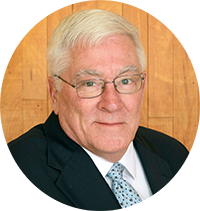 Degree(s) and Year(s) Degree(s) Conferred: Ph.D., 1972; M.S., 1966
Degree(s) and Year(s) Degree(s) Conferred: Ph.D., 1972; M.S., 1966
Graduate Academic Program(s) at Penn State: Biophysics
Professional Title: Captain, U.S. Public Health Service (retired)
Employer: U.S. Food and Drug Administration
Briefly describe your professional career, including your employment history and notable accomplishments
I studied Physics at the University of Vermont and Biophysics at Penn State. I served four years in the U.S. Army stationed at the Armed Forces Institute of Pathology located on the Walter Reed campus in Washington, D.C. I then transferred to the Commissioned Corps of the U.S. Public Health Service (USPHS) and worked at the Center for Devices and Radiological Health. I was involved with research projects and regulatory activities related to ionizing radiation, ultraviolet radiation, and radiofrequency cell phone emissions. When the AIDS crisis struck, we departed from our radiation work, and I joined my colleague to work on studies to determine if condoms, medical gloves, gowns, and masks can protect people from virus transmission. We found that latex products work well as long as they don’t break. We got a patent for our test method. Later, at the end of my career, I co-managed several projects to determine the safety of cell phones. We determined that normal cell phone emissions do not produce any health issues.
Please list honors, awards, and professional achievements
U.S. Patent for our test methodology to determine that latex barriers protect against virus transmission. I received the second highest award in the Commissioned Corps of the USPHS upon retirement. A few years after retirement, I was asked to return to the FDA and received an FDA Outstanding Alumni award. My best award was just the opportunity to work with a great number of outstanding scientists and regulators on projects and products that helped in the field of Public Health.
Please provide any advice to graduate students related to career exploration
Be flexible and be surprised. Although I was trained at Penn State to work in the area of radiation studies, I ended up on numerous other projects that were only peripherally related to radiation. I was asked to do risk assessments on the possible cancer effects from ethylene oxide used to sterilize medical devices and also studies on condoms, gloves and other barriers. When help was needed, I volunteered to review manufacturers’ submissions on medical air purifiers. Finally, I was asked to take over a large series of projects on the safety of cell phones. Although, cell phones are in the radiation area, it was an area (radiofrequency) that I had never previously studied. It didn’t take long to understand this new area.